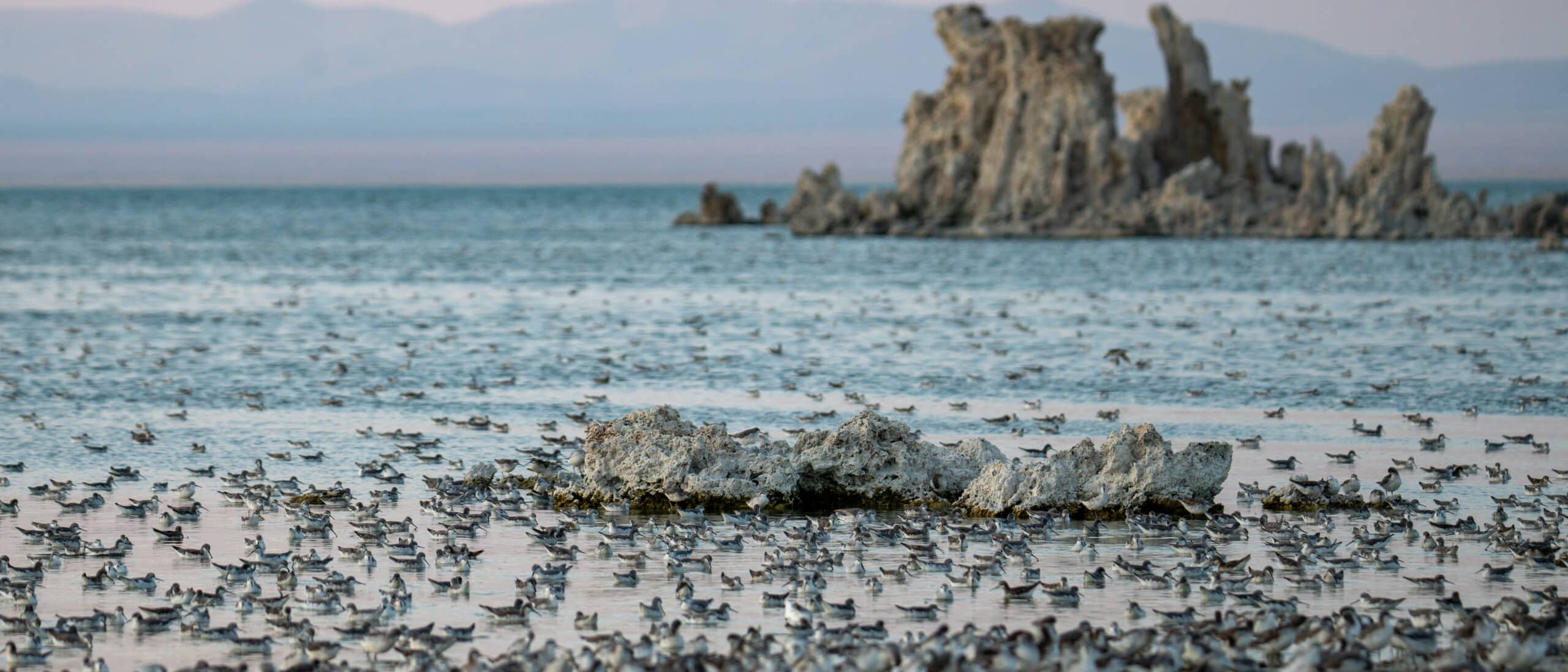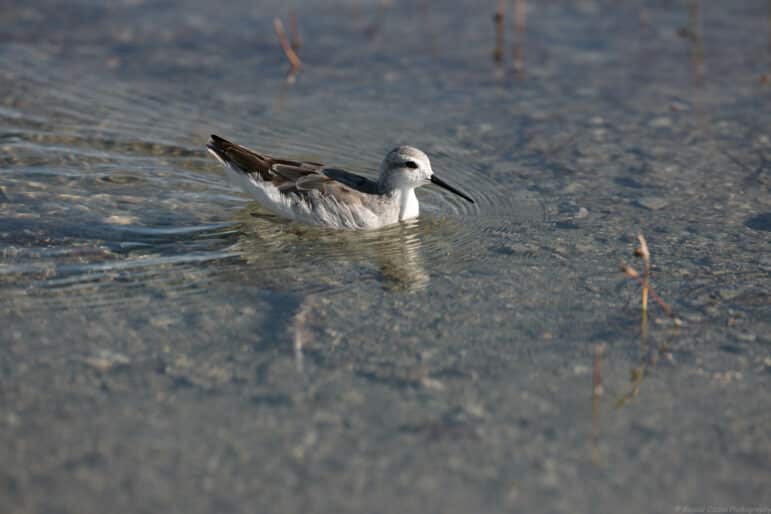
Today, the Center for Biological Diversity led a diverse coalition of scientists and conservation groups, including the Mono Lake Committee, in filing a legal petition with the U.S. Fish and Wildlife Service (USFWS) seeking protections for the Wilson’s Phalarope (Phalaropus tricolor) under the Endangered Species Act.
Wilson’s Phalaropes are ever-popular visitors to Mono Lake, swooping in synchronized formations among Mono Lake’s tufa towers and feasting on the lake’s flies and shrimp in preparation for hemispheric migrations. The phalaropes inspire the Mono Lake Committee’s work to restore Mono Lake to health and renew our commitment to ensuring that the decade-overdue management lake level of 6,392 feet is achieved.

And yet Wilson’s Phalarope numbers in North America have fallen by 70% since the 1980s. The future of the species at Mono Lake is interwoven with Great Salt Lake in Utah and Lake Abert in Oregon. Forty to sixty percent of the world population of Wilson’s Phalaropes—and up to 90% of the adults in the world—typically stage for fall migration simultaneously at these three lakes each year.
Mono Lake enjoys a measure of established, though as yet unfulfilled, protection. But its sister salt lakes—and thus Wilson’s Phalaropes—are in a more dire situation. Great Salt Lake fell to its lowest level in recorded history in 2022, with salinities pushing high enough to threaten ecosystem collapse. Lake Abert functionally dried up at the same time.
The petition, which highlights the challenges facing Great Salt Lake, includes extensive discussion of Mono Lake’s importance for the birds. The press release announcing the filing includes a quote from me:
“Thanks to citizen action that stopped the destruction of Mono Lake, we can still see tens of thousands of phalaropes winging in graceful formations among Mono Lake’s tufa towers and feasting on the lake’s flies and shrimp,” said Geoffrey McQuilkin, executive director of the Mono Lake Committee. “As we work to implement the lake’s landmark protections, the presence of phalaropes shows we can make a difference. Their epic migratory journeys are inspiration to protect saline lakes across North and South America.”
The petition provides a 100-page review of the existing science on Wilson’s Phalaropes and their status, making a compelling case for action. The petition asks USFWS to protect them as “Threatened” under the Endangered Species Act. A response and subsequent USFWS analysis are likely to take years. Thus, initiating the process is important, and consideration for listing will expand scientific resources and add to the urgency of protecting saline lakes.
“This petition on behalf of the Wilson’s phalarope is an act of love,” said author and co-petitioner Terry Tempest Williams, observing that saline lake protection “can no longer be seen as a local issue or a state issue but a global one — with the phalarope’s epic migration from Argentina to Utah and back again signaling (as the brine shrimp and brine flies do) the interdependence of all life.”
Mono Lake, as the petition notes, is critical habitat and yet “is too small to sustain the entire population of Wilson’s Phalaropes using saline lakes, should Great Salt Lake and Lake Abert disappear as habitat.” In other words, should those lakes be lost, Mono Lake will lose the Wilson’s Phalaropes.
This is not the first time the Mono Lake Committee has supported listing of an endangered species at Mono Lake. The Mono Lake brine shrimp (Artemia monica) is an endemic species found nowhere else on earth, and in 1989 the USFWS began consideration for listing the brine shrimp in response to the tremendous impacts of water diversions on Mono Lake. The State Water Board in 1994 promised habitat protection for the species by establishing the management level of 6,392 feet above sea level for the lake’s health, pausing further USFWS action.
Without people calling for action, Mono Lake would today be far too salty to support flies and phalaropes. Instead, as we work to ensure Mono Lake’s recovery, the annual presence of phalaropes shows that implementing real water solutions can meaningfully change the future for people, phalaropes, and saline lakes everywhere.
For more on phalaropes
- The science behind the petition: Mono Lake and the Wilson’s Phalarope under the Endangered Species Act
- Read the petition to list the Wilson’s Phalarope under the Endangered Species Act
- The story of the Wilson’s Phalarope – Spring 2024 Audubon article
- Current science efforts: International Phalarope Working Group meeting at Laguna Mar Chiquita in Argentina
- See phalaropes flocking around a canoe tour at Mono Lake
- March 28, 2024 Press Release: Endangered Species Protections Sought for Wilson’s Phalarope
- Student exchange partnership: Experience Ambientalia at the International Phalarope Working Group meeting
Top photo courtesy of Forrest English.
